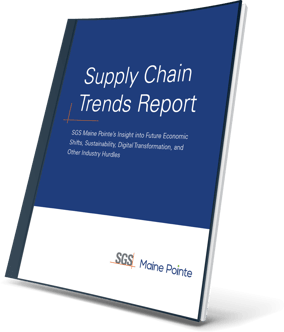Inventory management
Both too much and too little inventory signal problems that escalate throughout your plan-make-buy-move supply chain. Too much inventory ties up working capital, uses up valuable space, and raises costs. Too little inventory slows down customer service, impedes profits, and may leave you without essential parts and raw materials.
Inventory management encompasses:
- Supply and demand management
- Obsolete and excess inventory management
- Product lifecycle management.
Supply and demand management
A sales, inventory, and operations planning (SIOP) process is essential for balancing supply and demand, avoiding stockouts and missed sales, and keeping down the cost of goods sold. The SIOP process brings sales, marketing, inventory, operations, logistics, and planning leaders together to discuss not just historical trends, but future expectations based on real data, analytics, and machine learning. SIOP meetings have to be frequent: market conditions change quickly.
Analytics help to determine the economic order quantity (EOQ) and the reorder point (ROP). The EOQ calculation helps reduce costs, while the ROP determines when to reorder to avoid stockouts.
A specialty chemicals manufacturer bowed under weight of more than 2,600 metric tons of legacy inventory. A lack of systems to balance supply and demand meant that no one was taking responsibility or ownership of the problem. Once adequate systems and KPIs were in place, the manufacturer reduced inventory by 530 metric tons in six months and another 1570 metric tons in a year. Moreover, a new SIOP process primed the company to plan for real, not phantom, demand.
Excess and obsolete inventory management
Companies need two types of inventory stock: cycle stock that goes to fulfill customer demand and safety stock that is available if demand fluctuates. Overdoing either means that depreciation and carrying costs soar as excess and obsolete inventory clogs the warehouse.
Excess inventory consists of product that exceeds what you need in the next six months; obsolete inventory is the product no one wants and that you have no plan for; Excess and obsolete (E&O) inventory management focuses on reviewing inventory at least monthly and is an integral part the SIOP process.
SKU rationalization eliminates products that are underperforming or unneeded. It evaluates products based on several factors, including the likelihood of becoming obsolete, lead times, and market cycles. In addition to freeing up inventory space, SKU rationalization has the added benefit of reducing complexity in procurement, manufacturing, and logistics—fewer products mean more efficient operations all around.
Product lifecycle management
A product’s lifecycle includes new product introduction, growth, maturity, and decline or end of life. During the growth phase, inventory management is often considered a secondary consideration; but market fluctuations can quickly bring it to the forefront. Companies that rely solely on historic data may quickly find themselves with E&O inventory or stockouts and missed sales.
Product lifecycle management (PLM) goes hand-in-hand with minimizing E&O inventory and stockouts. An active PLM process includes marketing forecasts, a product roadmap, and inventory management. It prepares for the product’s end-of-life, considering resale, repackaging, and price reduction strategies to prevent inventory from piling up.
PLM strategies will change depending on where a product sits in its lifecycle. The relevant parameters include the product’s ability to attract the highest-spending customers; whether unused raw materials can be returned; the number of completing products at each stage; and how long customers are willing to wait on delivery.
Inventory management is a combination of supply and demand management, excess and obsolete inventory management, and product lifecycle management. It operates under the umbrella of sales, inventory, and operations planning, which ensures that the entire plan-make-buy-move supply chain is considered and that all functions contribute the data needed to adequately control inventory.
Related Resources
Ready to improve your consumer demand forecasting?

Talk to us
From rapid sprints for short-term gains to transformation for competitive advantage we are here to get you there.
Schedule a discussion
Submit this form to speak to an SGS Maine Pointe representative.
Prefer a call? (781) 934 - 5569




